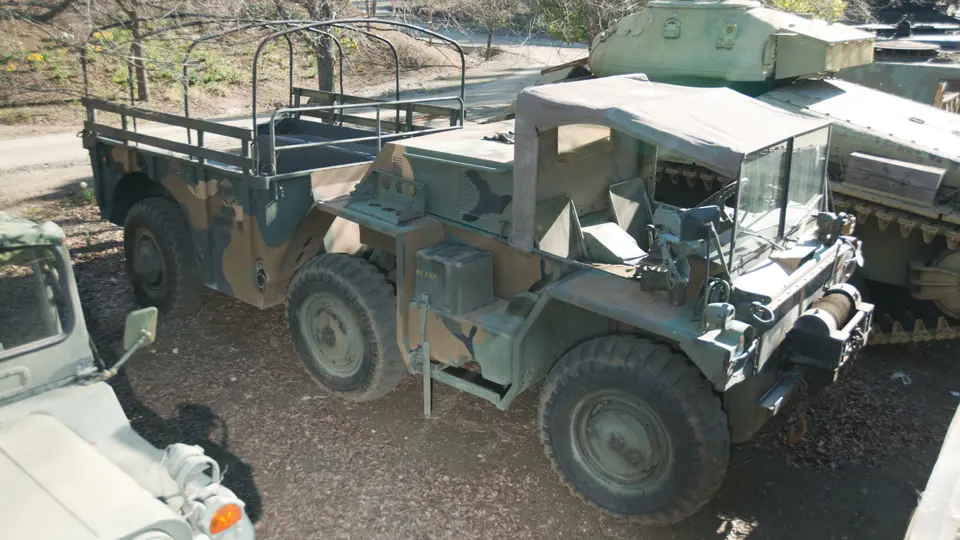 | Portola Valley, California
| Portola Valley, California
Weight: 5.1-tons (4,626-kg)
Length: 18' 8” (5.75-m)
Width: 7' 0” (2.13-m)
Height: 7' 5” (2.30-m)
Crew: 1-2
Armor:
None
Weapons:
Provision for 1x 7.62-mm M60 machine gun
Engine: Detroit Diesel 3-53, 3-cylinder, 103-hp
Power/weight: 20.9-hp/ton
Fuel capacity: 28-USG (106-l)
Range: 420-miles (675-km)
Speed: 55-mph (88-km/h)
The vehicle being offered, M561 Gama Goat, serial number is unknown, as is its build location. It is unrestored and in very good condition. It appears to still be in its original MERDC colors with USMC markings. It runs and drives well. It is missing the rear canvas cover for the load bed.
The M561 Gama Goat came into existence as a result of several programs that the U.S. Army funded during the 1950s and 1960s in order to improve the mobility of its troops. The first XM561 was built by LTV in December 1963 with the second test vehicle being completed in February 1964. A further 14 prototype vehicles were built by LTV between January and May 1965. The vehicles were tested extensively during the ensuing several years by the U.S. Army.
An Invitation for Bids was issued in August 1966 for the production of 15,274 M561 1-1/4 ton 6x6 trucks between 1968 and 1972. Of the six companies that put in bids, Consolidated Diesel Electric (CONDEC) was ultimately awarded the contract. The first production M561 left the CONDEC factory in September 1969. When production had been completed in September 1973, 14,274 had been built. This number was reduced from the originally planned 15,274 as the Army canceled 1,000 vehicles due to budget constraints.
The M561 series saw service with the U.S. Army and the USMC during the 1970s and into the late 1980s when it was replaced by the M998 HMMWV series. The M561 received mixed reviews throughout its time in service. There were many reliability issues with the engine, especially cooling problems. The vehicle was loud and required that the crew wear hearing protection whenever driving it. However, it had very good off-road capabilities which allowed it to go places that most wheeled vehicles couldn't. The M561 was fully amphibious and was propelled in the water by its wheels. Its light weight allowed it to be readily transportable as a sling load under both Army and USMC medium- and heavy-lift helicopters. An ambulance version of the M561, designated the M792 was also produced. It differed from the M561 by having a crew heater mounted in the cargo bed where the wounded would be carried.
The M561 series saw very little combat usage during its service. Some were deployed to Grenada during Operation Urgent Fury in October 1983. Others were deployed to Lebanon with the USMC as part of the peace keeping forces stationed there between 1982 and 1984.
Transport Cost to Storage: $660





